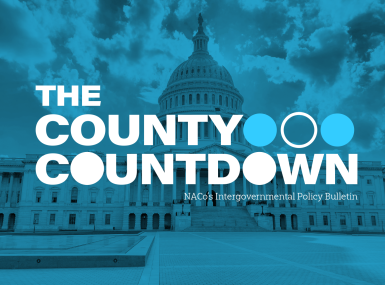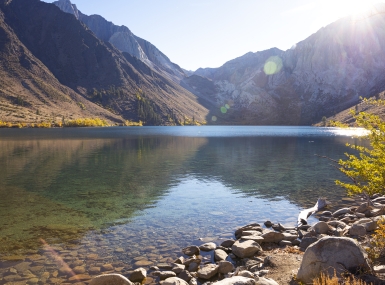Keystone XL Pipeline helps kick off 114th Congress
It didn't take long for the new 114th Congress to tackle the Keystone XL Pipeline.
Congress opened the week of Jan. 5. On Friday, Jan. 9, the House passed the Keystone XL Pipeline Act (H.R. 3), by a vote of 266-153 .
The measure, sponsored by Rep. Kevin Cramer (R-N.D.) with 30 cosponsors, would authorize construction of the northern section of the Keystone XL Pipeline. The southern section of the pipeline, which runs from Cushing, Okla. to the Gulf Coast, went operational in January 2014, but construction of the northern section of the Keystone XL Pipeline project has been delayed.
Also on Thursday, Jan. 8, the Senate Energy and Natural Resources Committee passed a companion bill (Keystone XL Pipeline Act, S. 1) by a vote of 13 9. Debate on the measure is expected to last several weeks to accommodate the president's State of the Union Address and lawmaker retreats.
S. 1 is identical to a measure debated in the Senate in the 113th Congress (S. 2280 ) . It was introduced by Sens. John Hoeven (R-N.D.) and Joe Manchin (D-W.Va.) on Jan. 6 and has 59 cosponsors.
Both bills would approve construction of the Keystone XL Pipeline to transport crude oil to the Gulf of Mexico from Canada.
The legislation would also streamline pipeline approval by waiving regulatory conditions that require a permit from the U.S. State Department because the pipeline would cross the U.S.-Canada border.
The Keystone XL Pipeline project was originally proposed in 2008 by TransCanada, a Canadian energy company.
The proposed project would stretch from Alberta, Canada and the Bakken regions of North Dakota and Montana to a hub in Nebraska before reaching refineries along the Gulf Coast.
The southern section of the pipeline was quickly approved but since the northern section of the proposed Keystone XL Pipeline crosses the U.S.-Canada border, the project requires a Presidential Permit review process.
However, even if both chambers pass legislation, it may continue to face challenges. On Jan. 6, the White House issued a veto threat . If the president vetoes the bill, Congress would have to muster a two-thirds majority vote in both chambers to override the veto.
In July, NACo adopted a policy resolution supporting the Keystone XL Pipeline (page 61): "NACo Urges Presidential or Congressional approval for the Keystone XL Pipeline."
Presidential Permits for Pipeline Siting
The pipeline is slated to cross six states. Concerns have been raised over siting across environmentally sensitive lands and oil spill safety issues. The original proposal had the pipeline sited across the Sand Hills region, and a significant amount of the water used in Nebraska comes from this region.
TransCanada successfully worked with the governor of Nebraska to site around this environmentally sensitive area. However, in 2014, a Nebraska District Court ruled against the state law that gave the governor authority to negotiate on behalf of the state. On Jan. 9, the Nebraska Supreme Court overturned the District Court decision.
Normally, the siting of oil pipelines is left up to state governments. While the federal government regulates pipeline safety, it generally leaves oil pipeline siting decisions to the states. However, oil pipelines that cross boundary lines between the U.S. and either Canada or Mexico require a Presidential Permit. This permit process is overseen by the State Department. Under Executive Order 13337 signed by President George W. Bush in 2004, the secretary of state is granted authority to approve or deny a project in the national interest. Prior to making this determination, the State Department is required to undertake a rigorous review under the National Environmental Policy Act (NEPA). NEPA is a federal law that requires comprehensive environmental review on projects to determine environmental impacts.
In January 2014, the State Department completed the final Environmental Impact Statement (FEIS) for the Keystone XL Pipeline, but noted the proposal is still undergoing further review.
Pipeline Background
The Keystone XL Pipeline project was originally proposed in 2008 by TransCanada Corporation, a Canadian energy company. The proposed project would stretch from Alberta, Canada and the Bakken regions of North Dakota and Montana to a hub in Nebraska before reaching its terminus at refineries along the Gulf Coast, stretching over 1,100 miles. The southern section of the pipeline was quickly approved but since the northern section of the proposed Keystone XL Pipeline crosses the U.S.-Canada border, the project requires a Presidential Permit review process.
The northern section of the pipeline has been mired in controversy since proposed for two reasons development of oil sands (also known as tar sands) and the route of the proposed pipeline.
Tar sands are a combination of clay, sand and water, and a thick, heavy oil (bitumen). Because the bitumen is heavy, it cannot be processed in the same way as traditional oil recovery. Instead, the bitumen needs to be extracted from the sand and water, which some stakeholders have argued releases more greenhouse gases and affects climate change.
Attachments
Related News

County Countdown – September 9, 2025
Every other week, NACo's County Countdown reviews top federal policy advocacy items with an eye towards counties and the intergovernmental partnership. This week features FEMA reform bill advancement, a major reorganization of the USDA and more.

Podcast: Talking with Public Lands County Leaders, Part VIII
The County News Podcast continues our series on public lands county leaders with two from outdoor recreation counties – Supervisor John Peters from Mono County, Calif. and Commissioner Sonja Macys from Routt County, Colo. Peters is this year’s Western Interstate Region president.

DOL announces AI workforce development program as part of White House AI Action Plan
The U.S. Department of Labor encouraged state and local governments to use WIOA funds to develop AI workforce development programs.
